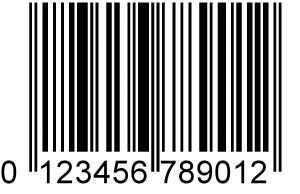Although it has only been around for a few dozen decades, barcode technology is ranked among the most important business technologies. Up until a few years ago, barcodes were exclusively used for data collection in conventional business activities like inventory management and event attendance control. But advances in other technologies in the recent past have spurred other innovative applications in things like advertisement, video games, health and nutrition etc. Even the original barcoding solutions have expanded to include special applications like equipment inspection, delivery tracking, and labor production reporting and management.
As you can see, barcoding technology is vastly popular, which is mainly due to its many functional applications. But despite its immense popularity in the business world, some people are still ignorant about its nature and usefulness. The following discussion aims to shed some light on some of the most important features and characteristics of this wondrous innovation. Read on for an insightful lesson on barcoding solutions.
What Is A Barcode?

It is a unique marker or identifier that is encoded with some descriptive information about a specific object. The data is encrypted or coded and posted on a label by a barcoding printer and then the label is attached to the object of interest. The coded data is optically read and interpreted by special devices called scanners and readers. It is then processed and analyzed by a customized barcoding system to infer various changes or alterations in the whole ecosystem. Barcodes are of two types, linear and 2D or matrix, and they can be encoded in many different styles or languages like the Universal Product Code (UPC), Code 128, and CPC Binary etc.
Applications
As discussed above, barcodes are used in many different business activities. The main business applications include inventory control and asset tracking where bar-coded stock items and business assets are scanned and the data recorded/stored in various systems respectively. There is also the aforementioned event attendance tracking solutions, which are variously designed to track participation in a group setting. Applications include tracking arrival and departure times of individuals in group events like employees in a tradeshow, students in school, or invited guests at a seminar. The system uses data collected using scanners and readers from bar-coded badges and IDs to create data reports. You can buy any of these barcoding solutions or you can opt to hire everything. Today there are even barcode software rentals where you can lease customized programs for your data collection exercise.
Fundamental Features
There are thousands of barcoding solutions in countless industries and businesses around the world today. And although they are all customized to suit specific business tasks, they all share some basic characteristics. For starters, they are all defined by their data collection methodologies. Secondly, all barcoding systems are supported by or feature some hardware components, which are usually regarded as accessories during setup, for physical data collection. And last but not least, every barcoding solution features a certain type of application software customized to solve a specific data collection problem. For instance, one type of application program enables a barcoding system to track event attendees and another to report and monitor workforce productivity.
Manufacturers And Dealers
There are countless technology companies dealing in barcodes. Every component in a barcoding system comes from specialized manufacturer. Some of the most esteemed brands for hardware devices like printers, scanners and readers include Godex, TSC, Intermec, Zebra, Datalogic, Brother, CipherLab, Opticon, Honeywell, and Motorola. Software companies like Wasp, Redbeam, and Foxfire specialize in creating barcoding programs.
